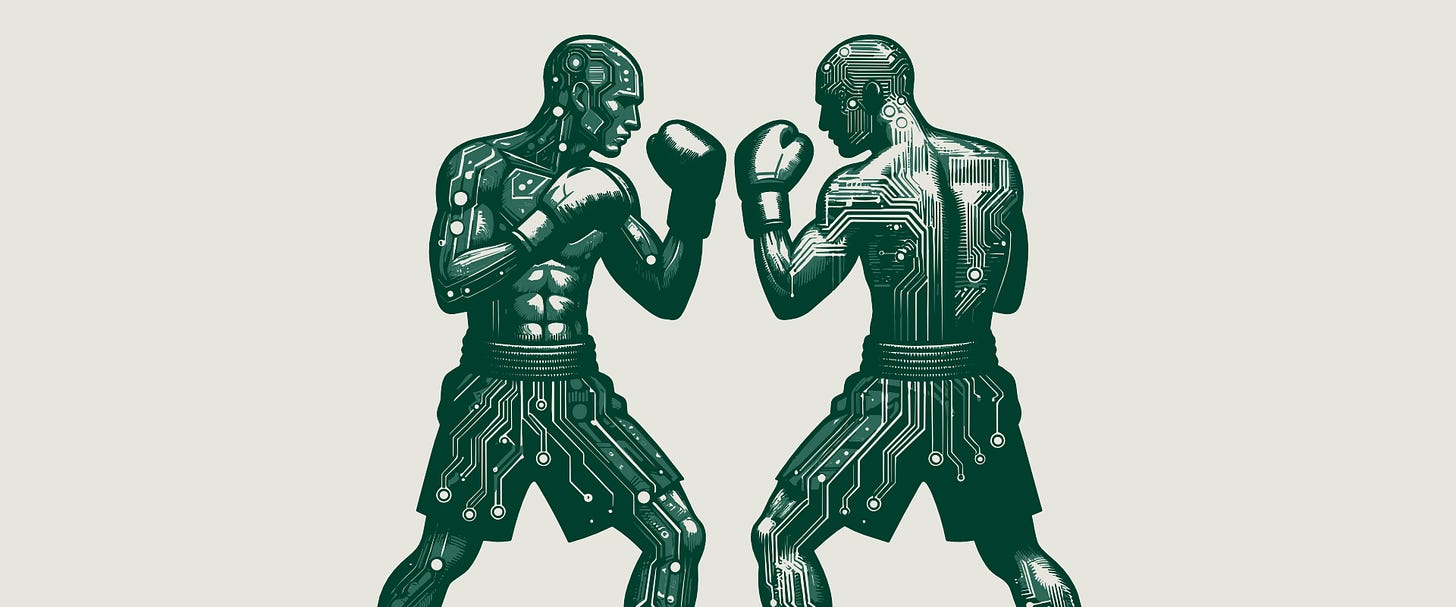In the ever-shifting world of AI, a pivotal debate shapes its future: open source (public contribution) versus closed source (private contribution, only) development models. This divergence is not just technical but philosophical, echoing the broader discussions about innovation, safety, and accessibility in technology.
OpenAI, known for ChatGPT and industry leading models like GPT-4, represents a closed source approach with a nuanced stance. They tend to prioritize safety and controlled access to prevent misuse of AI technology. For the open source representation, we’re going to look at Mistral — a French-based AI company that emphasizes transparency and collective development.
OpenAI's commitment to responsible AI is evident in their cautious release strategy. They implement rigorous testing and phased rollouts to understand and mitigate potential risks. By restricting access, they aim to prevent the technology's exploitation for harmful purposes, such as generating fake news or creating deepfakes. Contrastingly, Mistral believes in the power of open source for responsible AI development. They argue that transparency leads to broader scrutiny and faster identification of flaws. This approach encourages a diverse community of developers to contribute to safety and ethical guidelines.
Quick Analysis
🔒 Transparency and trust. OpenAI's closed source model often leads to criticism regarding transparency. In contrast, Mistral's open source approach fosters trust through openness but could suffer from fragmented efforts.
💡 Speed of innovation. OpenAI’s approach potentially slows down innovation due to its controlled environment. Mistral's model, while risky, can accelerate development and discovery of new applications.
⚖️ Ethical considerations. OpenAI’s controlled release strategy allows for a more cautious ethical approach, while Mistral’s open-source nature might lead to ethical dilemmas due to its unrestricted nature.
🏙 Community engagement. OpenAI’s model limits community engagement, whereas Mistral’s approach benefits from a wide range of contributors, promoting diversity in AI development.
Deep Dive
OpenAI: A reliance on internal expertise
In the realm of AI alignment - ensuring AI systems' goals align with human values - closed source models like OpenAI's approach with a guarded strategy. They conduct internal research and collaborate with selected external partners. This method aims to control the narrative around AI alignment, focusing on in-depth, concentrated efforts.
OpenAI's latest endeavors reflect their ongoing commitment to responsible AI development, particularly in the realm of AI alignment. They have announced the first outcomes of their superalignment team's work, a unit dedicated to ensuring that future superintelligent AI systems remain beneficial and under human control. This team's research focuses on developing techniques for less powerful AI models to supervise more powerful ones, a concept that could be crucial in managing future superhuman AI systems. This research aligns with OpenAI's closed source model, emphasizing controlled development and alignment techniques, underscoring their cautious approach towards AI safety and ethical considerations. Additionally, OpenAI has introduced a new funding initiative with a $10 million fund to support research on superalignment. This initiative aims to engage a broader community of researchers, including university labs and individual scholars, in tackling the challenges of AI alignment. This move illustrates OpenAI's commitment to fostering a research ecosystem that contributes to safer AI development, aligning with their goal of controlled and responsible AI advancement.
Keep reading with a 7-day free trial
Subscribe to Handy AI to keep reading this post and get 7 days of free access to the full post archives.





